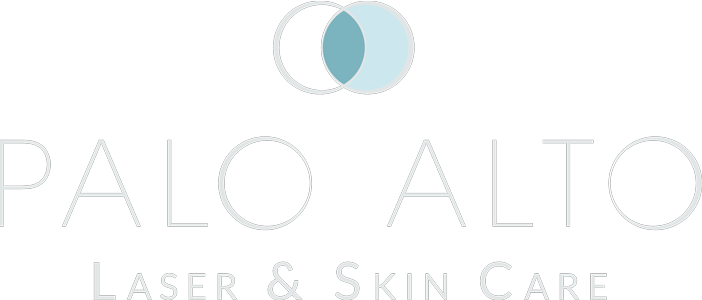
Whether you call them brown spots, age spots, liver spots, hyperpigmentation, or something else, one thing is certain: nobody enjoys this common skin condition technically known as lentigo. It’s one of the most common reasons clients come to Palo Alto Laser and Skin Care. Caused by UV damage, lentigo earned its name because sometimes these spots can resemble lentils in shape and color. You will find them most often on the face, neck, collarbone, tops of the hands, and anywhere else your skin has been routinely exposed to the sun.
The vast majority of the time, brown spots are totally harmless. They are different than moles (though the two share some commonalities), as moles are much more concentrated. Skin cancer should be a concern for everyone, and during your annual mole check with a dermatologist it can be determined if a mole might be suspicious and whether it requires a biopsy. Skin cancer is rarely associated with authentic lentigo—but that doesn’t mean you have to just live with these skin imperfections.
How Lentigo Operates
There are different types of lentigo. Some develop slowly over the years while others seemingly appear overnight. The most common type of lentigo is called lentigo simplex. This type of brown spot is usually present at birth or begins in childhood. Sometimes lentigo simplex goes away on its own, but sometimes it lingers. You will most often see it on the limbs and trunk of the body. As you can imagine, this type of lentigo (sometimes a birthmark) is not caused by UV damage.
Solar lentigo is the type of brown spots specifically caused by ultraviolet radiation. It’s most common in those over 40, but you can start to develop it much younger (especially if you have a history of sunburns and/or unprotected sun exposure). Solar lentigo develops when UV radiation makes pigmented cells, or melanocytes, multiply in the skin. Sometimes solar lentigo gets larger over time.
All About Lentigo
There’s a specific kind of UV-induced lentigo, called ink spot lentigo, that can happen in those with fairer skin immediately following a sunburn. This is just what it sounds like and can present as darker and more concentrated than solar lentigo. PUVA lentigo begins after PUVA therapy (psolaren and ultraviolet), a certain kind of treatment that may be used for psoriasis and eczema.
Some skin experts separate solar lentigo from what is colloquially called “tanning bed lentigo.” Tanning beds are literal hotbeds for UV damage, and as you can imagine they are just as dangerous and able to cause lentigo as the sun. Finally, there’s radiation lentigo. This is a type of brown spot that occurs after radiation treatment, usually when treating cancer.
In some rarer cases, inherited syndromes may cause lentigo as well. This can include Cowden syndrome, Peutz-Jeghers syndrome, Noonan syndrome, and xeroderma pigmentosum. However, most people who struggle with lentigo have either lentigo simplex or solar lentigo.
Treating Lentigo: Lasers, Peels and Microneedling
The good news is that not only is lentigo typically harmless, it’s also treatable. Laser and energy-based devices, as well as chemical peels and microneedling, are just a few of the fantastic ways to lighten and even eliminate all kinds of brown spots. There are many types of lasers, energy-based devices, and chemical peels available—and they aren’t all created equally or the best option for your specific skin type and brown spots. That’s why it’s critical to only work with trusted and reputable skin experts who have access to the latest technologies and products.
At Palo Alto Laser and Skin Care, Zuzana Likar personally trains our staff to the highest of standards. A great treatment begins with a correct diagnosis and a customized plan to achieve the results you want and deserve. Oftentimes a combination of treatments, usually repeated in a few sessions, will be needed to achieve optimal results. Find out what treatment plan is best for you by scheduling a complimentary consultation today. Connect with Palo Alto Laser and Skin Care by calling (650) 565-8683 or complete the online form now.
